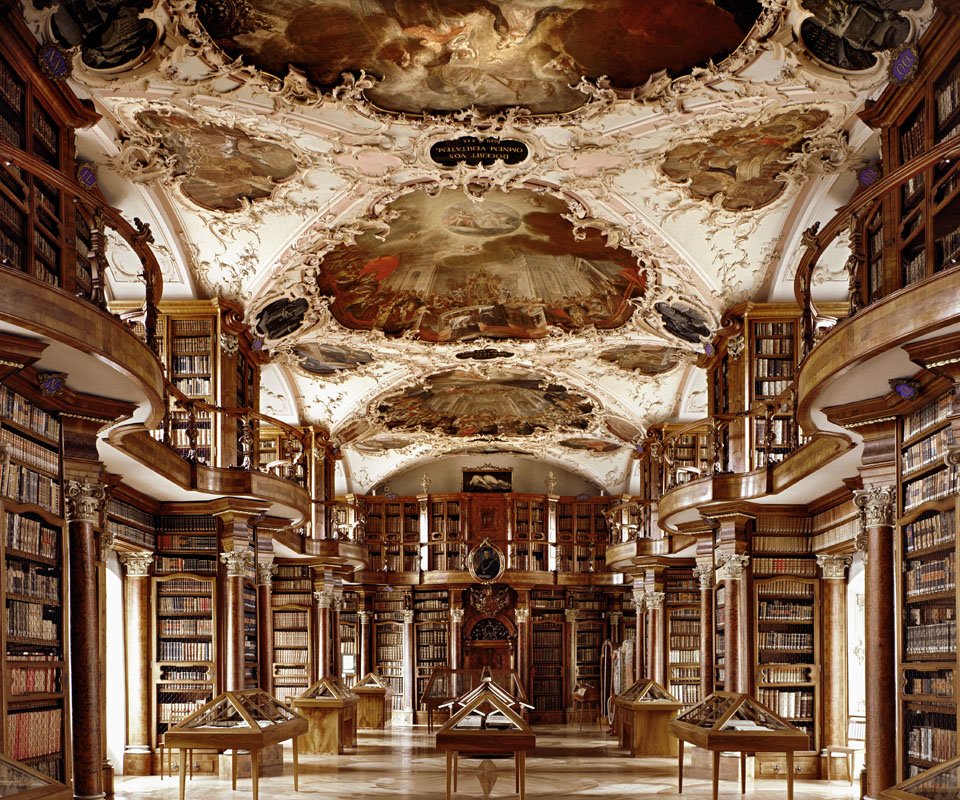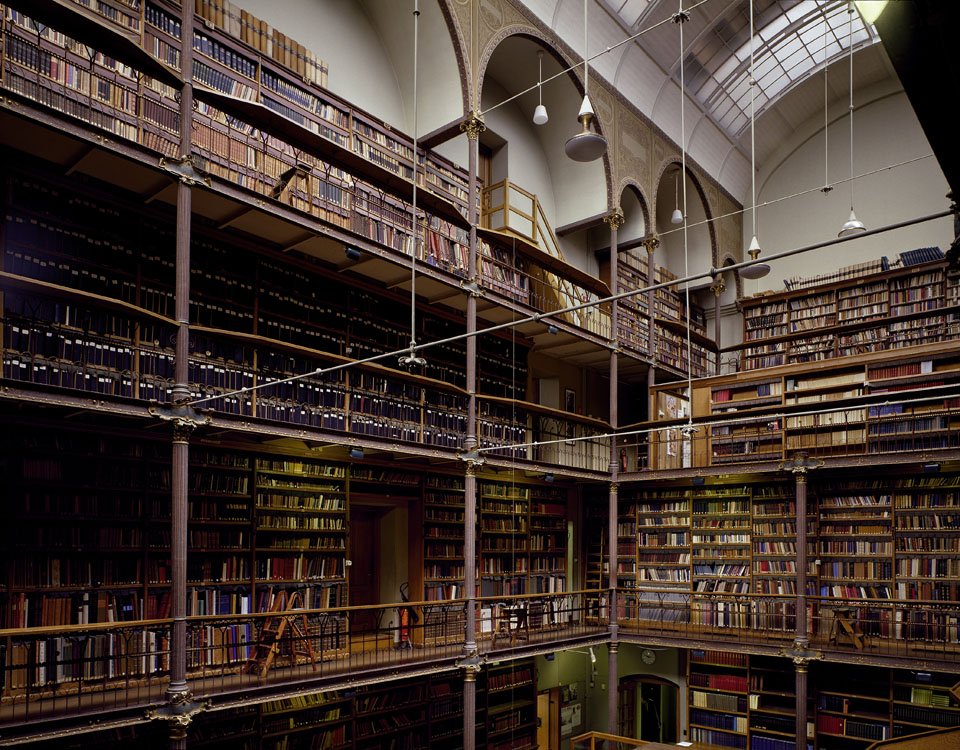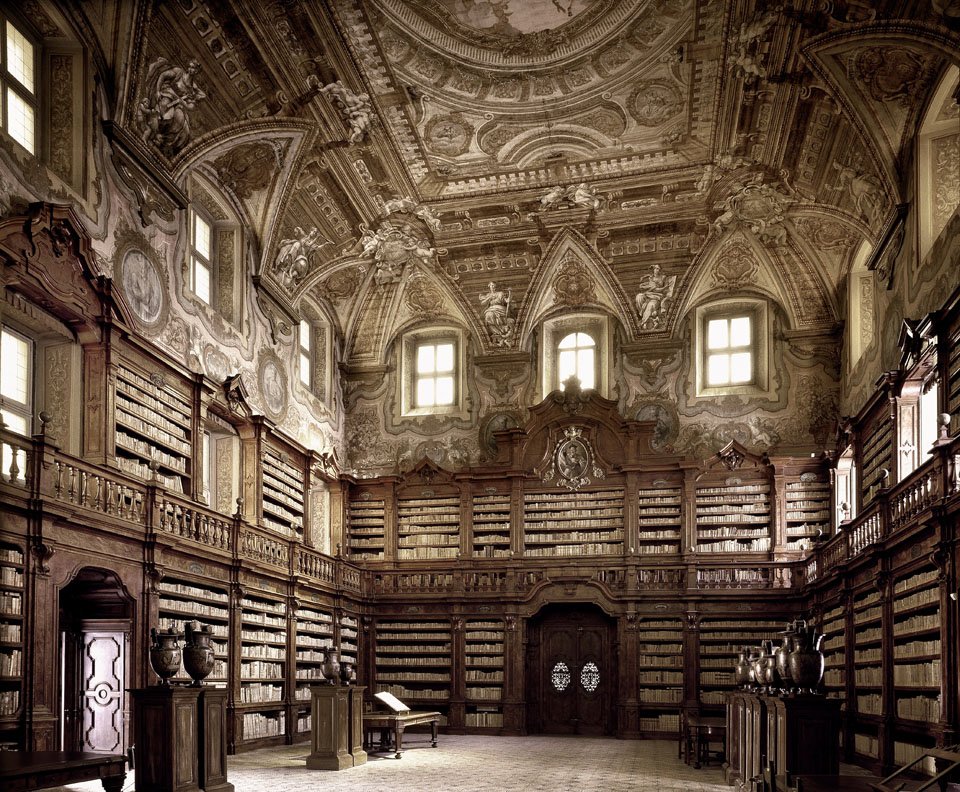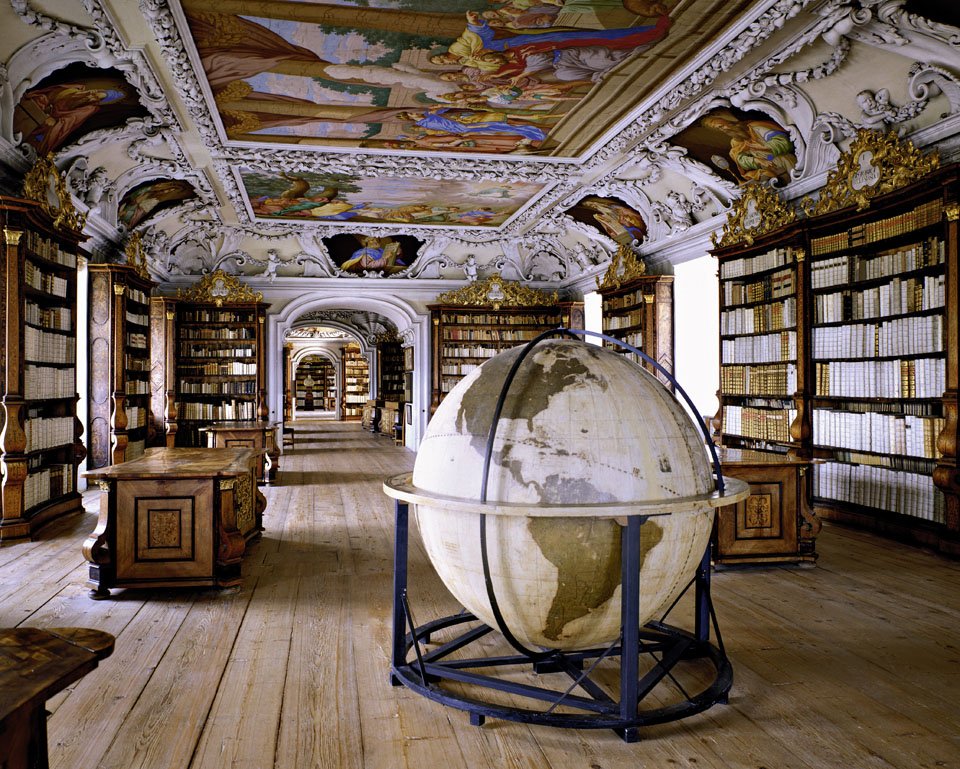
A Glimpse Inside the World’s Most Beautiful Libraries
From Switzerland, Germany, Italy, and Beyond
Libraries have long been more than simple repositories of knowledge. They are living centers of intellectual exchange, research, teaching and learning whose doors are firmly open to the world at large. They are places of education and of cultural and scientific transfer within their domain and at the same time open portals to global information. Libraries stand for communication with the past, present and future. Furthermore, libraries were and remain statements of prestige as well as aesthetic and architectural sophistication. These houses of knowledge and its appropriation have inspired secular and spiritual authorities since the Early Modern Era to devote particular attention to their design and décor—as abundantly witnessed by these impressive photographs.
Our own present is no less possessed of this creative urge: “Lately, people all over the world have been building fabulous temples to books,” noted the Frankfurter Allgemeine Sonntagszeitung in March 2014. The image of the temple invoked here is another familiar metaphor for libraries. It reflects a feeling of respect and veneration for something more sublime, perhaps not necessarily in the religious or metaphysical sense, but undoubtedly for something that looks beyond the limits of our individual lives. In a veritable declaration of love to libraries, the German physician and entertainer Eckart von Hirschhausen (b. 1967) recently expressed it thus: “We are part of a great work that looks beyond each individual.” And there is something else that people find in the reading-rooms of these book temples: quiet—a quiet that, in the public spaces of our noisy cities, is probably only otherwise found in places of worship outside times of service. –Georg Ruppelt
 Stiftsbibliothek Sankt Gallen, St. Gallen, Switzerland Copyright: Massimo Listri / TASCHEN
Stiftsbibliothek Sankt Gallen, St. Gallen, Switzerland Copyright: Massimo Listri / TASCHEN
 Klosterbibliothek Metten, Metten, Germany Copyright: Massimo Listri / TASCHEN
Klosterbibliothek Metten, Metten, Germany Copyright: Massimo Listri / TASCHEN
 Rijksmuseum, Research Library, Amsterdam, The Netherlands Copyright: Massimo Listri / TASCHEN
Rijksmuseum, Research Library, Amsterdam, The Netherlands Copyright: Massimo Listri / TASCHEN
 Biblioteca Statale Oratoriana dei Girolamini, Naples, Italy Copyright: Massimo Listri / TASCHEN
Biblioteca Statale Oratoriana dei Girolamini, Naples, Italy Copyright: Massimo Listri / TASCHEN
 Stiftsbibliothek Kremsmünster, Kremsmünster, Austria Copyright: Massimo Listri / TASCHEN
Stiftsbibliothek Kremsmünster, Kremsmünster, Austria Copyright: Massimo Listri / TASCHEN
__________________________________

From Massimo Listri. The World’s Most Beautiful Libraries by Elisabeth Sladek and Georg Ruppelt, published by Taschen. Top image: Strahovská Knihovna, Prague, Czech Republic Copyright: Massimo Listri / TASCHEN
Georg Ruppelt
After studying history, German language and literature, education and philosophy, Georg Ruppelt gained his PhD with a doctoral thesis on “Friedrich Schiller in National Socialist Germany”. He subsequently worked as a librarian, becoming deputy director of the Herzog August Bibliothek in Wolfenbüttel in 1987, and director of the Gottfried Wilhelm Leibniz Bibliothek in Hanover from 2002 to 2016. Ruppelt has published over 400 essays and 40 monographs on the subject of books, library science, and cultural history.












